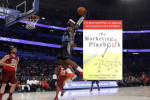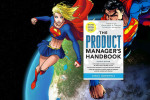Strategic Marketing

Marketing of High-Technology Products and Innovations by Mohr, Sengupta, and Slater
Mohr, Sengupta, and Slater present a proactive approach to marketing in Marketing of High-Technology Products and Innovations and write that “at its heart, marketing is a philosophy of doing business that reflects shared values and beliefs about the importance of creating value for customers by solving meaningful problems.” Marketing is seen as a way to “bring the voice of the customer into the firm” and guiding technical specifications, identifying market segments, establishing cost targets, and selecting partners who will participate in the value delivery process.
The authors argue for focus in strategic direction due to the importance of coordinating the marketing approach. They note that marketing activities can be owned by a marketing department, product management group, strategic planning team, or senior management. Research and analysis are key competencies which support strategy formation.
Functional marketing activities include the traditional “4 P’s”: product, price, promotion, and place known as the “marketing mix”. The authors note that the responsibility for these three functional areas are often spread across several organizational units. Successful companies can effectively manage these activities in a coordinated way across organizational boundaries and focus on “the moment of truth” customer touch points. Every touch point with the customer can strengthen or weaken the relationship.
Tactical activities, like creation of collateral, although important, are not equivalent with “marketing”.
Strategic marketing activities
Which markets to compete within
Which segments to target
What value to offer customers within target segments
Selection of a competitive position in the market
Functional marketing activities
Decisions related to price, product, place, and promotion
Relationships between functional groups related to marketing decisions
Tactical marketing activities
Creation of marketing collateral and communication
Events, advertising, and communication strategy
The authors outline a classic “plan, do, check, act” framework for strategic market planning, the purpose of which is to create competitive advantage.
Strategic Marketing Steps
1. Assess Resources and Competencies
Superiority: customer value, rareness
Sustainability: durability, inimitability
Key marketing competencies for high-tech companies include gathering and using market intelligence; relationships with customers, partners, and distributors; service delivery; product development; go to market capabilities, and supply chain management.
Inimitability is increased by three factors: 1) degree of difficulty for other firms to observe the source of competitive advantage; 2) degree of difficulty for other firms to acquire similar sources of competitive advantage; 3) degree of difficulty for another firm to replicate the competitive advantage.
2. Answer Key Strategy Questions
Who are our customers?
What is our value proposition?
How do we create and deliver value?
The authors recommend a “bifocal vision” which asks “who are our customers now?” and “who should our customers be in five years?” For value propositions, they list three types: 1) “all benefits” which simply states the benefits the customer will receive from the offering, without necessarily understanding whether or not the customer values the benefits; 2) “favorable points of difference” which compares a company’s offering to those of its competitors; 3) “resonating focus” which uses the most important buyer needs to establish the value proposition.
3. Select Strategy Type
Next, a marketing strategy should be identified to support previously articulated marketing goals.
Product Leader (Prospector) – market pioneer, first mover advantage, targets innovators and early adopters
Fast Follower (Analyzer) – attempts to improve product leader’s products and services through innovation, pricing, advertising/distribution, changing the rules of the game
Customer Intimate (Differentiated Defender) – targets the early and late majority customers
Operationally Excellent (Low-Cost Defender) – provides highest quality, price, and ease of purchase
4. Create Organization Processes and Structure
Formal vs Emergent processes
Create a market-driven organizational structure – organize around customers, not products
Measure marketing performance with a marketing dashboard






